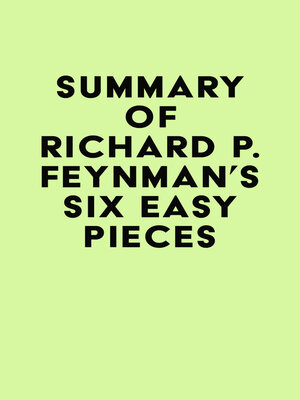
Sign up to save your library
With an OverDrive account, you can save your favorite libraries for at-a-glance information about availability. Find out more about OverDrive accounts.
Find this title in Libby, the library reading app by OverDrive.



Search for a digital library with this title
Title found at these libraries:
| Loading... |
Please note: This is a companion version & not the original book. Book Preview:
#1 The test of all knowledge is experiment. Experiment is the sole judge of scientific truth. But where do the laws that are to be tested come from. Experiment helps produce these laws, but it also requires imagination to create from these hints the great generalizations.
#2 The laws of nature are approximate. We first find the wrong ones, and then we find the right ones. The world is a complicated place, and our understanding of it is constantly changing.
#3 The atomic hypothesis states that all things are made of atoms, which are small particles that move around in perpetual motion. If we look closely at a water drop, we see nothing but water, but if we magnify it, we see paramecia swimming back and forth.
#4 The atoms in water are 1 or 2 angstroms in radius. If the drop is on a slope, the water will flow. If the heating continues, the particles will eventually fly apart and become separated from one another.






